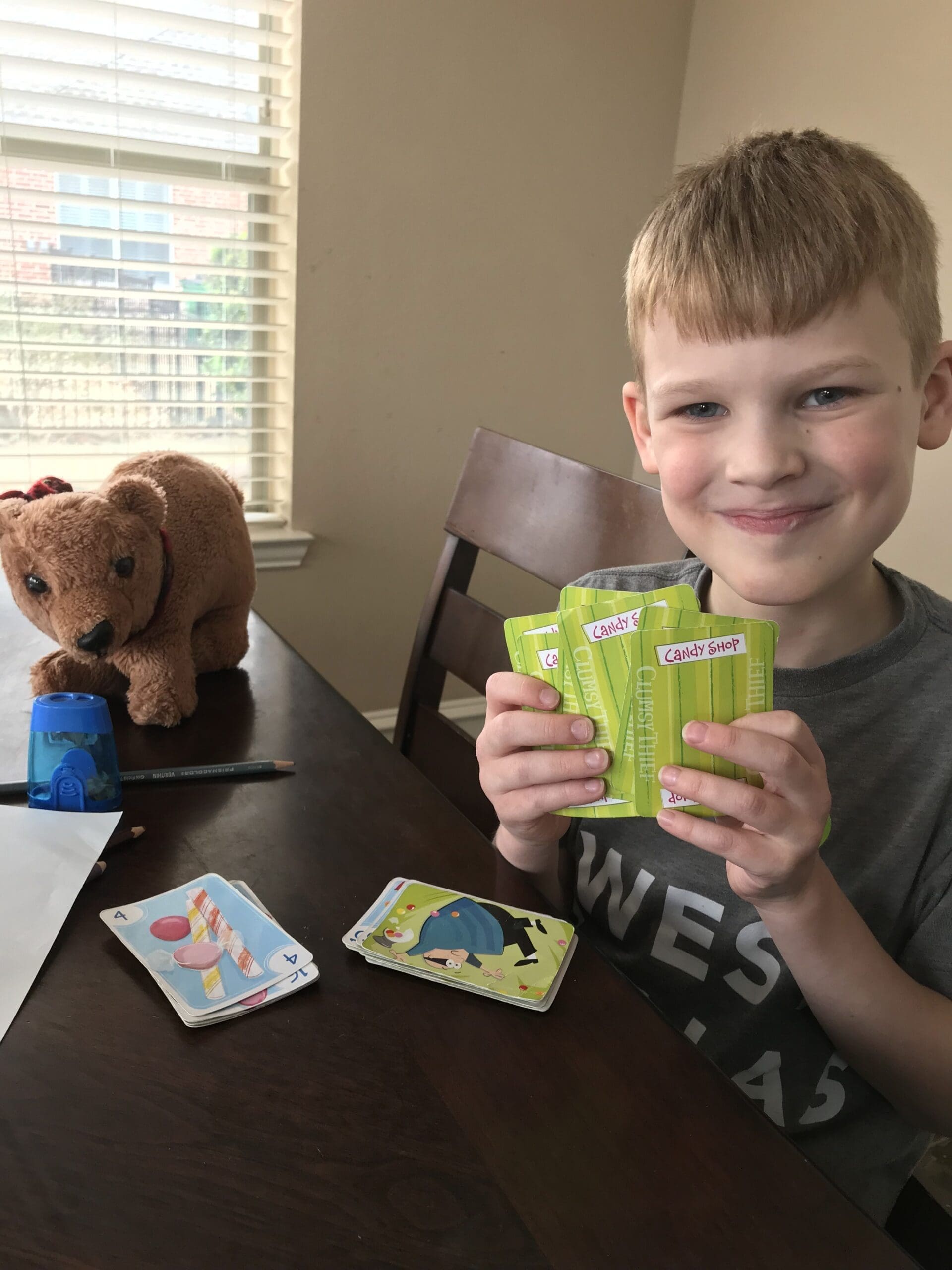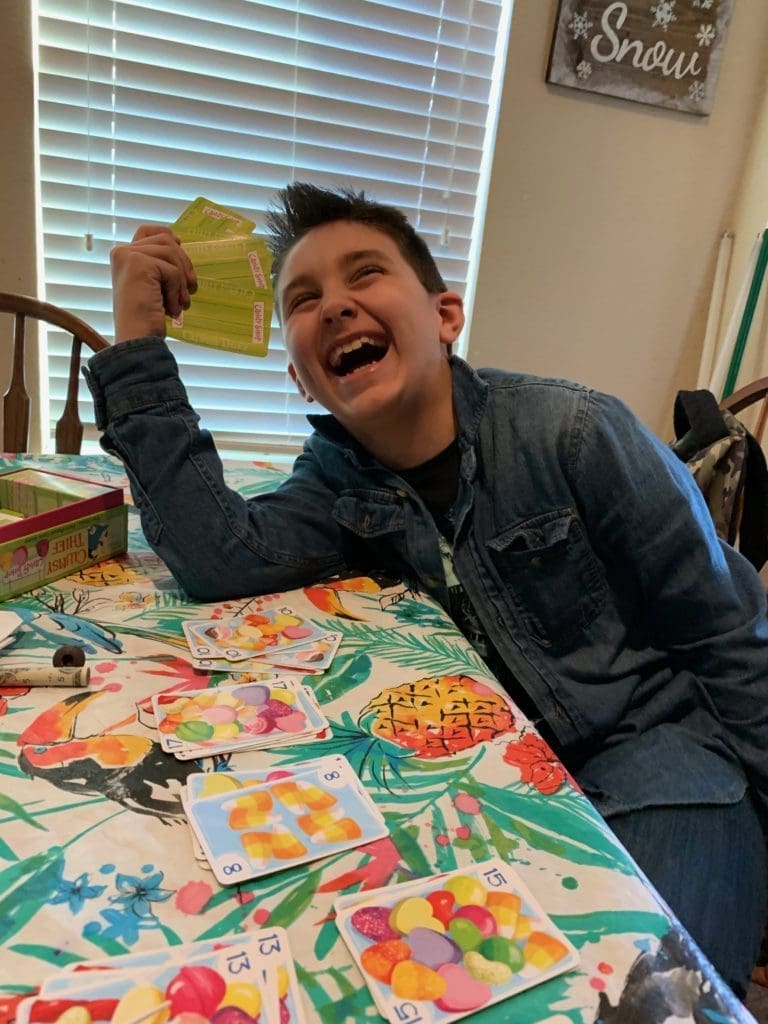
Clumsy Thief and Clumsy Thief in the Candy Shop were the first Gamewright games I ever purchased. They have been a favorite of every child I have played with and are one of my most used games. Both games practice addition. The original game, Clumsy Thief, uses combinations of two numbers that equal 100 and the candy shop uses numbers that equal 20. For younger children there is also a Clumsy Thief Jr game that practices combinations that equal 10. All games are played the same way. Even our older students like the candy and junior versions because the illustrations are so fun. Also, once students know how to play, the game can be played very quickly, which is good when you have a short amount of time you want to fill with something educational and fun.

With students still learning addition facts, I like to make a chart to help them with the addition combinations. This also helps them see the patterns they can apply to other numbers.
Each player starts with a hand of cards and must put two cards together that equal the target number. This number is always 10 in the junior version, 20 in the candy version; 100 in the original. When they have a match they put it face up in front of them.
The trick to the game is that any other player can steal the cards by putting another match on top of the stack. For example, if a player puts down a 3 card with a 17 card on top of it to equal 20, another player can top the 17 card with another 3 card and take all the cards. Yet then someone else can put another 17 and steal the entire stack! Thief cards (raccoons in the junior version) can steal any stack of cards, but a jail (bucket in the junior version) card captures the thief. The game keeps going until you run out of cards. The player holding the most cards at the end of the game wins.
(I did have one gifted/talented student who wanted to score the cards by adding all the number values. He sorted his cards by number, multiplied the number on the cards by how many cards to get subtotals, and then added them all together. If you too have students who find that fun, go for the mental math practice!)
You can play taking turns while kids are learning the game, but once they understand the rules older kids especially like to play fast, taking new cards as they need them.
Kids love the games because they are fast paced and you get to steal cards from other players. What you as the teacher will realize is that the students are effortlessly memorizing addition combinations.
